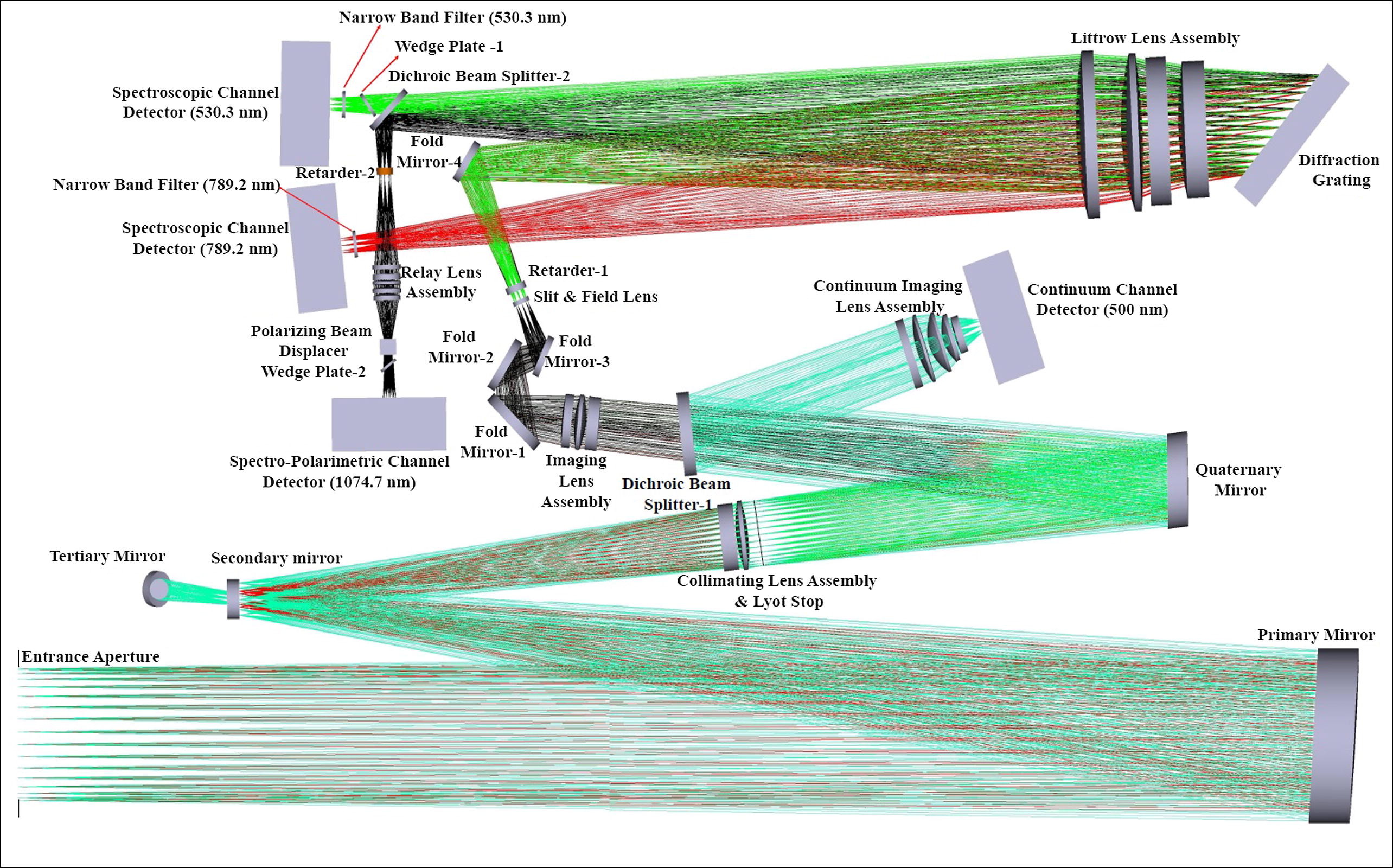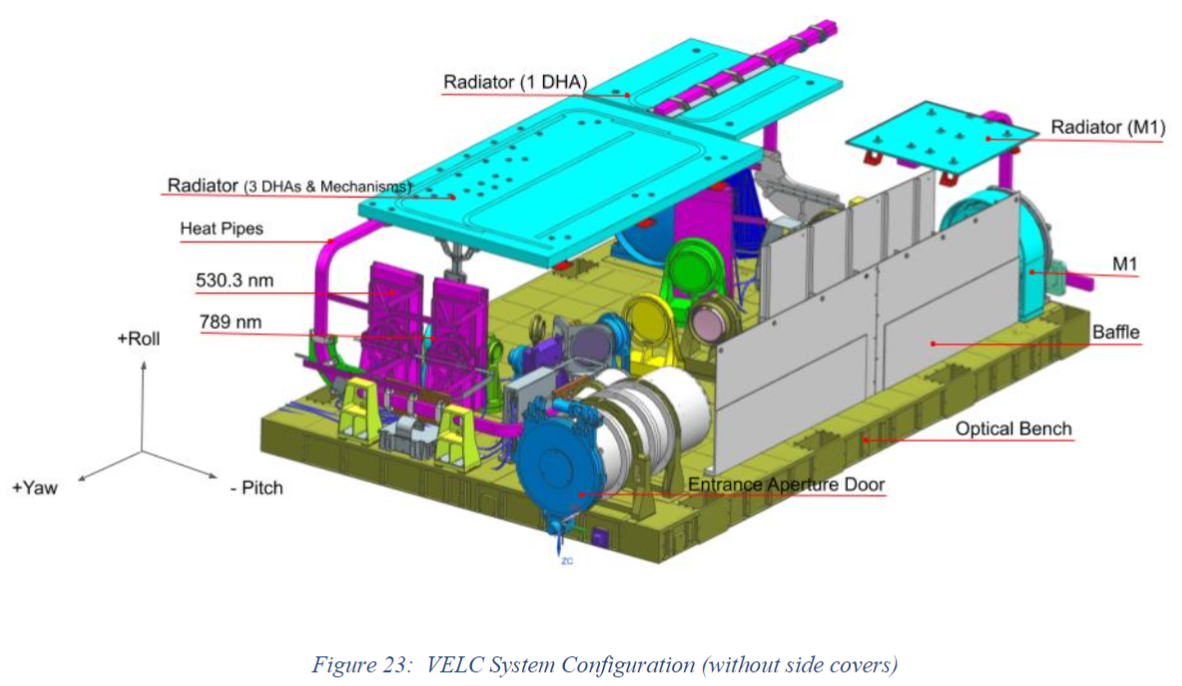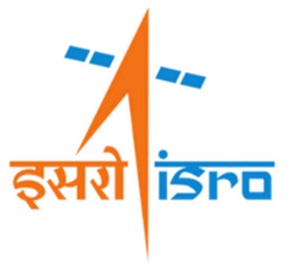Optical Layout
VELC is a reflective internally occulted coronagraph. Light from solar disc and corona enters the instrument through the entrance aperture and is imaged by an off-axis parabolic mirror (M1) of diameter 20 cm. The optical layout of VELC is shown in the figure below. M2 is a concave mirror that is placed at the focus of M1 acts as an internal occulter for coronagraph. Disc light and coronal light less than 1.05 R☉ pass through the central hole on M2 and are reflected out of the instrument by a mirror M3 through a small opening on the top of the instrument. The coronal light reflected by M2 is collimated by a two-element collimator lens. The collimated beam will be directed into different channels with the help of M4. Reflected light from M4 is split into two parts by dichroic beam splitter-1 (DBS1) which reflects the light below 515 nm to an imaging channel and transmits the light above 515 nm to the spectroscopy channels (refer more details in Rajkumar et al).
The above optical design of VELC allows performing simultaneous spectroscopic, spectro polarimetric observations in coronal emission lines and imaging solar corona in the continuum. The simultaneous observations obtained are the continuum white-light images in 5000 Å, spectral profiles in visible emission lines centered around 5303 Å, 7892 Å, and spectro-polarimetric information in 10747 Å. The field-of-view for continuum imaging channel is 1.05 to 3.0 R☉ whereas it is 1.05-1.5 R☉ for other channels. Spectroscopy and polarminetry are performed via linear scanning mechanism by four slits of width 50 µm separated by 3.75 mm. Each visible channel is fed to 2560 x 2160 size CMOS detector, and the Infra-red channel is attached to 640 x 512 size InGaAs detector.









